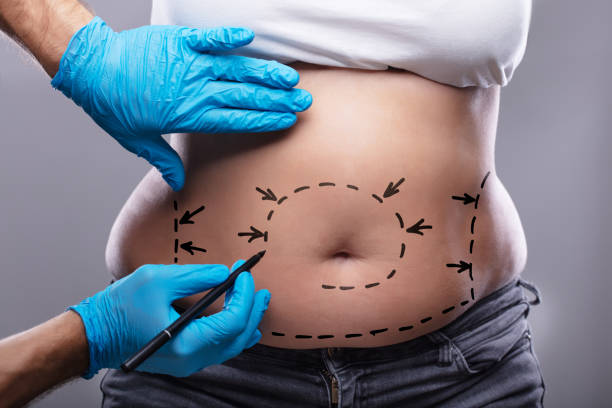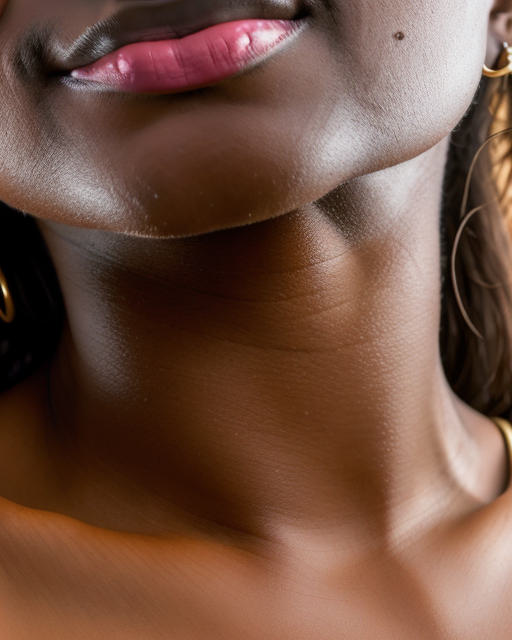Elevate Your Expression: How Facial Rejuvenation Redefines Your Natural Beauty
Posted on: February 1, 2024
Facial rejuvenation is the cornerstone of modern aesthetic practices, offering a refreshed and youthful appearance. As technology advances, so do the techniques to revitalize skin texture and tone without extensive downtime. This blog post dives into the latest methods that stand at the forefront of enhancing facial aesthetics safely and effectively. By exploring these cutting-edge procedures, individuals can make informed decisions on how to maintain their natural beauty with minimal intervention.
Understanding the Causes of Facial Aging
Collagen Decline
Collagen is a key protein in our skin. It keeps skin firm and supple. As we age, our bodies produce less collagen. This leads to wrinkles and sagging.
Sun exposure breaks down collagen faster. This causes premature aging signs like fine lines and discoloration. Protecting your skin from the sun is crucial.
Lifestyle Factors
Our daily habits impact how quickly we age. Smoking can speed up the aging process significantly. It damages your skin’s structure, leading to early wrinkles.
Diet also plays a role in facial aging. Foods high in sugar can harm collagen production over time. Eating healthy helps maintain youthful-looking skin longer.
Genetic Influence
Genetics determine how fast we show signs of aging on our faces. Some people might notice changes earlier than others due to their genes. We cannot change our genetics but understanding them helps manage expectations about facial rejuvenation treatments.
Signs of Aging in the Face
Fine Lines
Fine lines often appear as the first signs of aging on our faces. These subtle creases can emerge around the eyes and mouth, hinting at changes within the skin’s dermis. Over time, fine lines may deepen into more noticeable wrinkles.
As we age, expressions like smiling or frowning etch their history onto our skin. This is where frown lines can become prominent features on our forehead and between eyebrows. The delicate area under the eyes also reveals signs of aging with fine wrinkles becoming more apparent.
Volume Loss
Another key sign involves changes in facial volume and contour. With age, cheeks may lose their plumpness leading to a less youthful appearance. This loss of volume contributes to sagging skin along the jawline.
The effects are not limited to cheeks alone; eyelids might droop while eyebrows could descend from their natural arch position. Such alterations change how light interacts with facial contours, which can add years to one’s appearance.
Skin Changes
In addition to wrinkles and volume loss, aging manifests through various changes in skin texture and coloration. Age spots are telltale signs that accumulate over days exposed to sun without adequate protection.
These darkened patches usually appear on areas most exposed like hands but also affect faces significantly as they disrupt an even complexion—another clear indicator of advancing years. Skin texture itself alters too; it becomes thinner and may look less smooth than it did during younger days.
Overview of Facial Rejuvenation Procedures
Invasive Techniques
Invasive facial rejuvenation often means surgery. Facelifts are a common choice. They remove excess skin and tighten what remains. This can offer dramatic results but comes with risks like infection or scarring.
Minimally invasive options have fewer risks. These include laser treatments and fillers that need less recovery time. Patients typically prefer these for their convenience.
Laser Treatments
Laser therapy uses focused light to treat skin issues. It can reduce wrinkles, scars, and blemishes. There are different types of lasers used depending on the desired outcome.
The procedure is quick, with some redness as a side effect. However, it’s important to choose an experienced professional for safety.
Fillers
Fillers add volume to the face without surgery. They can smooth out lines or plump up areas like lips or cheeks.
- Pros: Immediate results; no downtime.
- Cons: Temporary; may require regular maintenance.
These injections take minutes and effects last from months to years depending on the type used.
Recent Advancements
New technologies keep improving facial rejuvenation outcomes.
- Innovations in laser therapy deliver more precise treatments.
- Advanced fillers now provide longer-lasting effects than before.
Researchers continue developing safer, more effective techniques every year.
Surgical vs Non-Surgical Options
Longevity Results
Surgical procedures often provide long-lasting results. A facelift, for instance, can maintain a youthful appearance for about ten years. The effects of non-surgical treatments like fillers or Botox are more temporary, typically lasting several months to two years.
Non-surgical options require ongoing treatment sessions. This means more frequent visits to maintain results compared to surgical alternatives.
Downtime Risks
Non-surgical treatments generally have minimal downtime. Patients usually resume normal activities immediately after procedures such as laser therapy or injections. However, they might experience minor side effects like swelling or bruising.
In contrast, surgery involves significant recovery time. Patients need weeks off work and daily activities post-operation due to the invasive nature of these methods.
Cost Comparison
The cost is an important factor when considering facial rejuvenation.
- Surgery: Higher upfront costs but fewer repeat expenses.
- Non-surgery: Lower initial payment but accumulates over repeated sessions.
Patients should discuss both options during a consultation with their specialist. They will consider factors such as budget constraints and desired outcomes before deciding on the best course of action.
Key Considerations Before Deciding on Surgery
Health Evaluation
Before considering facial rejuvenation surgery, assessing health is crucial. Medical history can influence your candidacy for surgery. Chronic conditions like diabetes or high blood pressure may affect healing.
It’s important to disclose all health information to your surgeon. They need a full picture of your well-being. This ensures the best care and highlights any special precautions necessary.
Risk Awareness
Understanding potential risks is vital when considering surgery. Complications such as infection, scarring, or unexpected reactions to anesthesia could occur.
Set realistic expectations about outcomes and recovery times too. Knowing what’s achievable helps prevent disappointment with results.
Surgeon Selection
Choosing a board-certified surgeon is key for safety and success in facial rejuvenation procedures.
A certified professional has proven their skill through rigorous testing and peer evaluations.
Research their background thoroughly before deciding:
- Verify certification status.
- Read reviews from previous patients.
- Look at before-and-after photos of past surgeries they’ve performed.
Preparing for Facial Rejuvenation Procedures
Medical Evaluations
Before undergoing facial rejuvenation, thorough medical evaluations are crucial. Doctors may request blood tests and a physical examination. This ensures your body can safely handle the procedure.
Patients might undergo skin assessments too. Specialists evaluate facial skin condition to tailor treatments like laser therapy or eyelid rejuvenation. Always disclose full health history to your doctor.
Lifestyle Adjustments
Making lifestyle changes is often necessary before treatment. Smoking cessation is vital as it hinders healing and increases complication risks during recovery from procedures such as facelifts or laser treatments.

Avoiding sun exposure helps maintain skin integrity before the process begins. Sun-damaged skin can affect results of rejuvenation efforts, making pre-procedure care essential.
Medication Management
Proper medication management prior to facial plastic surgery is important for safety reasons:
- Some medications can increase bleeding risk.
- Others might interfere with anesthesia or post-operative pain relief.
Your surgeon will guide you on which medications to stop or continue. Generally, patients must avoid aspirin and certain anti-inflammatory drugs weeks before their scheduled procedure.
Recovery and Maintenance After Procedures
Post-Procedure Care
After undergoing facial rejuvenation, patients must follow specific care instructions. These are crucial for healing and achieving the desired results. Initially, it’s common to receive guidelines on managing swelling or bruising. For example, patients might be advised to use cold compresses and keep their head elevated.
Doctors often prescribe a regimen that includes gentle cleansing and moisturizing of the treated area. It is important to avoid harsh chemicals or exfoliating agents immediately after treatment. Patients should also protect their skin from sun exposure by using sunscreen with high SPF.
Activity Timeline
Returning to normal activities can vary based on the procedure performed. Some treatments allow patients to resume daily routines almost immediately, while others require more downtime. Most commonly, strenuous exercise or heavy lifting is discouraged for at least a couple of weeks.
Patients should expect detailed guidance from their healthcare provider regarding when they can go back to work or engage in social events without compromising recovery.
Skincare Regimen
To maintain the benefits of facial rejuvenation long-term, a consistent skincare routine is essential. Patients are encouraged to invest in high-quality products that complement their skin type and address specific concerns such as hydration or aging signs.
Regular visits to a dermatologist can help tailor this regimen over time as needs may change with age or environmental factors. Incorporating treatments like facials or chemical peels periodically could also extend the life of rejuvenation results.
Achieving Natural-Looking Results
Tailored Plans
Professionals in facial rejuvenation understand that each person’s face is unique. They create individualized treatment plans to enhance one’s appearance subtly. This approach ensures results look natural, not overdone.
Experts consider factors like age, skin type, and desired outcomes when planning treatments. For example, they might recommend different substances or techniques for someone looking to improve contours versus restoring volume.
Expert Techniques
To avoid an unnatural look, professionals use a variety of techniques with precision. They focus on improving quality without altering the fundamental aspects of one’s appearance.
One method involves stimulating collagen production in targeted areas. This helps maintain the skin’s elasticity and firmness naturally. Experts may also use photos from earlier years to guide their work and preserve natural contours.
Follow-Up Care
Regular follow-up appointments play a crucial role in achieving the best possible results. These sessions allow experts to make refinements based on how the body responds over time.
During these visits, professionals can assess changes and adjust treatments if necessary. Such attention ensures that enhancements remain consistent with the rest of your features.
Summary
Facial rejuvenation encompasses a broad spectrum of procedures tailored to combat the signs of aging, ensuring individuals can reflect their inner vitality on their faces. From understanding the underlying causes of facial aging to exploring both surgical and non-surgical options, this article has provided a comprehensive guide to inform those considering rejuvenation therapies. Key considerations have been outlined to prepare for the journey towards a refreshed appearance, emphasizing the importance of realistic expectations and post-procedure maintenance for lasting results.
The pursuit of natural-looking rejuvenation requires informed decisions and a commitment to the chosen procedure’s recovery process. If you’re contemplating facial rejuvenation, consult with certified professionals who can offer personalized advice based on your unique needs. Take the next step towards restoring your youthful glow by scheduling a consultation today.
Frequently Asked Questions
What causes facial aging?
Facial aging is typically caused by a combination of factors including genetics, lifestyle choices, sun exposure, and the natural decrease in collagen and elastin production over time.
How can I tell if my face is showing signs of aging?
Signs of aging in the face include wrinkles, fine lines, sagging skin, loss of volume or plumpness, age spots, and a dull complexion.
What are some common facial rejuvenation procedures?
Common procedures include facelifts, Botox injections, dermal fillers, laser treatments, chemical peels, microdermabrasion and fat grafting. Each targets different signs of aging.
Should I choose surgical or non-surgical facial rejuvenation options?
The choice between surgical and non-surgical options depends on individual concerns and desired outcomes. Non-surgical methods are less invasive with shorter recovery times but may offer more temporary results than surgery.
What should be considered before deciding on facial rejuvenation surgery?
Before deciding on surgery consider your overall health status; potential risks; recovery time; costs involved; surgeon’s qualifications; realistic expectations for outcomes.
How do I prepare for a facial rejuvenation procedure?
Preparing involves consulting with a qualified professional to discuss goals/expectations; possibly undergoing pre-procedure evaluations/tests; following specific instructions regarding medication/diet before the procedure.
What does recovery involve after a facial rejuvenation procedure?
Recovery varies depending on the procedure but generally includes following post-op care instructions carefully to minimize complications and ensure optimal healing. Downtime can range from minimal to several weeks.





